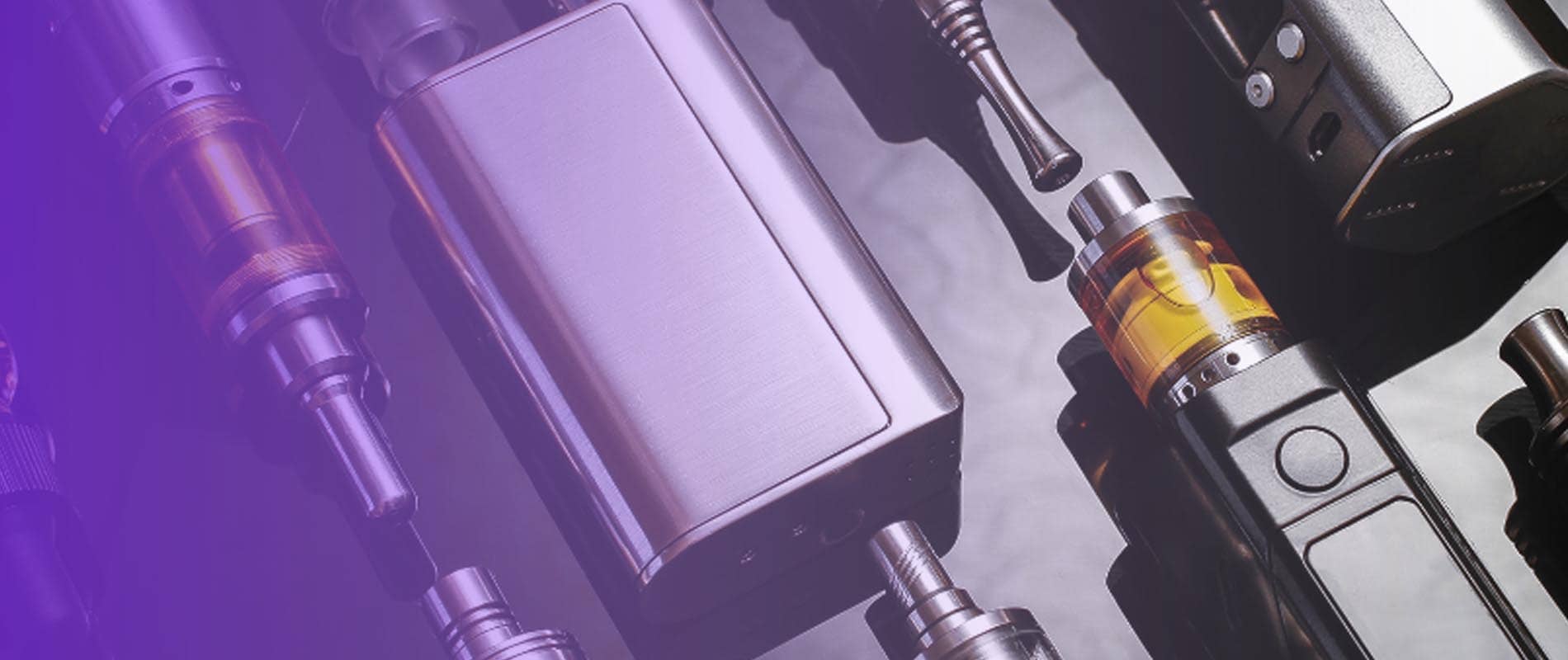Slowly, more Canadians than ever are making the switch from traditional nicotine products to vapes, e-cigarettes, pods, and e-liquids. Now, there are vape stores in every Canadian community. Not to mention disposable vapes and pods widely available through convenience stores.But what does the Canadian e-cigarette and vape market look like in 2023?
With roughly five percent of us vaping these days, vape store owners need to pay attention to the nuances influencing this growth. Here is a look at market size, projected regulatory changes, and shifts in consumer behaviours for Canada’s vape market.
Projected E-Liquid and Vape Market Size
First, let’s look at several market predictions for e-cigarettes, vapes, and e-liquids, in Canada and beyond.
Grandview Research predicts that “[t]he global e-cigarette and vape market size was valued at USD 22.45 billion in 2022 and is expected to grow at a compound annual growth rate (CAGR) of 30.6% from 2023 to 2030.” As a result, there could be as many as 15 million people vaping on a daily basis in the not-too-distant future.
Canada’s outlook is less explosive but still follows the global upward trajectory. 6W Research suggests a CAGR in Canada of 9.4% between 2019 and 2025.
When it comes to e-liquids, Grandview Research projects a CAGR of 13.4% from 2021 to 2027. This growth follows global sales of 1.4 billion USD in 2021. Again, in Canada, the growth rate is less intense but still follows global trends.
An Eye to Regulatory Changes
The Canadian government keeps a close eye on e-cigarette trends. Most experts predict more regulations coming online in the near future.
Vape industry insiders expect flavoured vape products to get renewed regulatory attention as Canada aims to reduce the appeal to adolescents. Most provinces already ban flavoured nicotine products in some capacity, but a federal proposal is also in the works.
Market and Research’s latest report on the Canadian market strongly suggests that “non-tobacco or non-menthol flavors in e-liquids and e-cigarettes will be banned in the future.”
As a retailer, you’ll want to pay close attention to any flavour bans looming in your jurisdiction but proactively manage your inventory.
Consumer Behaviour is Driven Largely by the Price
Many once assumed that the rise of nicotine vapes directly related to a better understanding of the health concerns related to smoking. At the moment, this isn’t what is influencing most consumer behaviour.
For most people who choose to vape over smoke, it all boils down to price. However, TRLabs suggests that “[m]ore people are embracing e-cigarettes and vaping as a cost-effective alternative to traditional tobacco” and that “[t]he affordability of e-cigarettes is attracting thousands of people to vape every day.”
Increasing Tax Pressure on the Vape Market
Both federal and provincial governments are increasing (or threatening) to raise tax rates on nicotine and vaping products. The latest federal increase came through in October 2022, with many provinces indicating they would follow suit.
Considering the vape customer is primarily driven by price, it will be interesting to see how this plays out at the till. More than 25% of Canada’s vape market already happens illegally. Will a more expensive legal product only force more buyers underground?
Ian Irvine, a professor of economics at Concordia University and a consultant on alcohol and tobacco for the federal government, suggests fewer people will make the switch from traditional cigarettes to vapes, a decline in demand for legal businesses, and domestically produced e-liquid, which is taxable, will see a drop in sales compared with imported pods and disposables.
Consumers Looking to Experiment with New Products
There is also the suggestion that consumers, even if they have a go-to brand, always want to try something new. They always want to explore new flavours, formulations, and new brands.
Although there is no hard data on how many vapers are open to exploring, Canada Convenience Store News reports this as a growing trend among its clientele. They go so far as to recommend that convenience stores carry a diverse inventory to “ensure your product mix includes tobacco alternatives, such as cigars, snus and vapes for those who are looking to try something new.”
More Brands Looking for Recycling and Waste Solutions
Disposable nicotine vapes and pods are notoriously difficult to recycle. For the eco-conscious consumer, this remains an ongoing frustration. This is part of the reason why the Market and Research’s 2022 report indicates that waste programs will become increasingly important over the coming years.
As they document, both TerraCycle and Quantum Lifecycle Partners have created specialised recycling solutions. All in efforts to ethically process the growing level of e-cigarette and cannabis vape waste.
Is this something you’ve heard from your customers? Do you have waste solutions in place for them?
Despite Higher Taxes and Looming Regulations, Vape Market Continue to Grow
There is no stopping the continued upward trajectory of the Canadian vape and e-cigarette market. Not even taxes or flavour bans.
Still, there are shifts in consumer preferences well worth taking note of. For example, we now see that sales are driven by price first and foremost. While a varied selection comes in second. On the regulatory front, more provinces and the federal government are likely to double down on the non-tobacco and non-menthol flavour ban.
Want to see how TechPOs can help you manage inventory and make business administration more efficient? Schedule a Demo Today.





